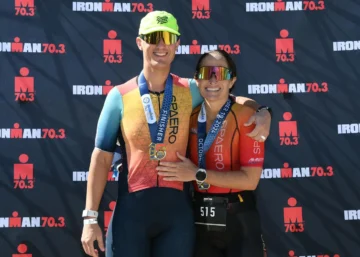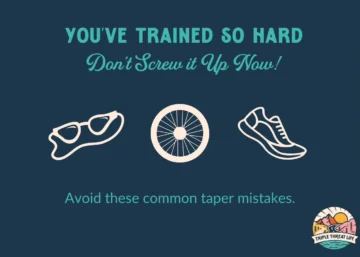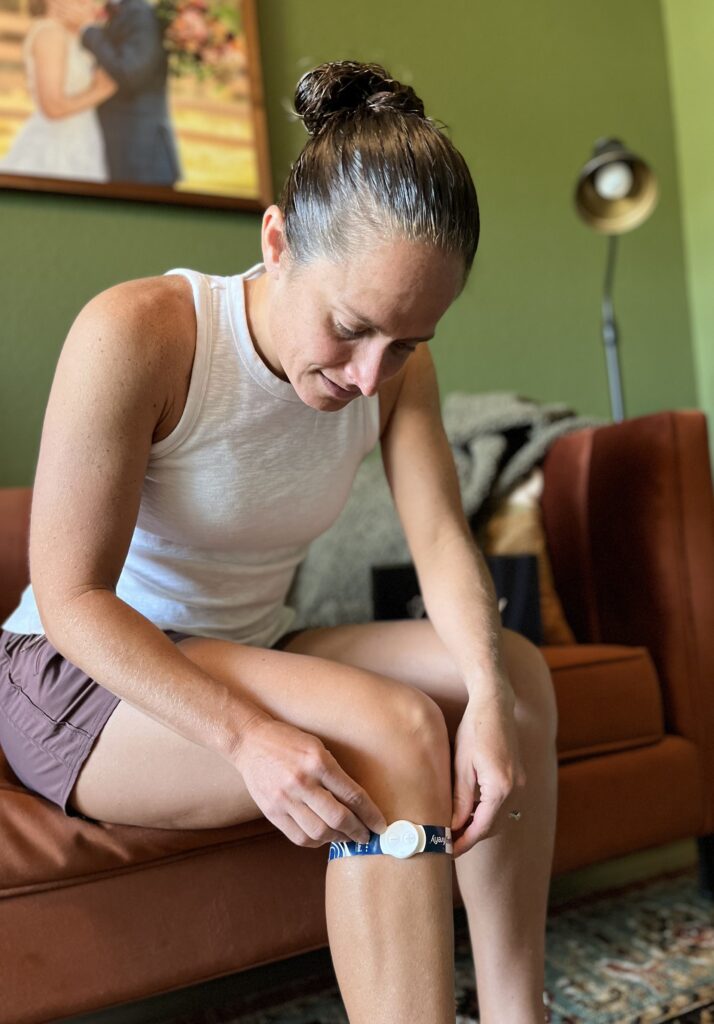
Matt and I just got back from our first triathlon of the season at St. Anthony’s in St. Petersburg, Florida. We both had great races! 5th AG for me and 20th AG for him, so we were really pleased.
It’s only 72 hours post-race, so we’re still feeling some soreness. We use all the traditional recovery methods: compression boots, epsom salt bath, or an easy spin on the bike. But we have a secret weapon that really helps decrease our recovery time dramatically…
It’s called Firefly.
What is Firefly?
Firefly is a device that uses a small electrical pulse to stimulate the peroneal nerve in the lower leg. This triggers a muscle contraction, which helps to increase blood flow, decrease soreness, and shorten recovery time 3X faster than traditional methods.
And it’s not just for your legs. Firefly increases blood flow throughout your whole body by sending blood back to the heart so it can pick up oxygen and essential nutrients. It also stimulates a lymphatic response, which helps flush lactate.

How to use Firefly
I received an Elite Starter Pack, which comes with 3 pairs of Firefly devices and a set of knee straps. The straps aren’t necessary, but they help keep the device in place, especially if you plan to use them while walking around or running errands.
Each Firefly has a sticky gel backing. To use, simply peel the device off the adhesive back and apply to the outside of the calf muscle.
First, you will need to locate the fibular head, which is the small, bony bump on the outside of the calf, just under the knee. Place the dotted line marker on Firefly directly underneath the fibular head.
Then, hold down the plus sign to turn the device on. You will see a flashing green light. There are seven different intensity levels, so find one that feels best to you. Firefly doesn’t hurt, but you can definitely feel a contraction in your lower leg.
If you’ve put it in the right spot, you will see a slight foot flutter with each contraction. It’s wild!
I was first introduced to the technology about three years ago when Matt was the team doctor for the Tampa Bay Rowdies, a pro soccer team. He brought a pair home, and we’ve been using them ever since.
I wear Firefly for about two hours after a hard workout, like an interval run or trainer ride. Also, I like to use them post-race during travel, because they’re definitely more portable than compression boots.
I had a hard bike ride this morning, so I put them on while I went to a dentist appointment, did some grocery shopping, and I’m wearing them right now as I write this post!
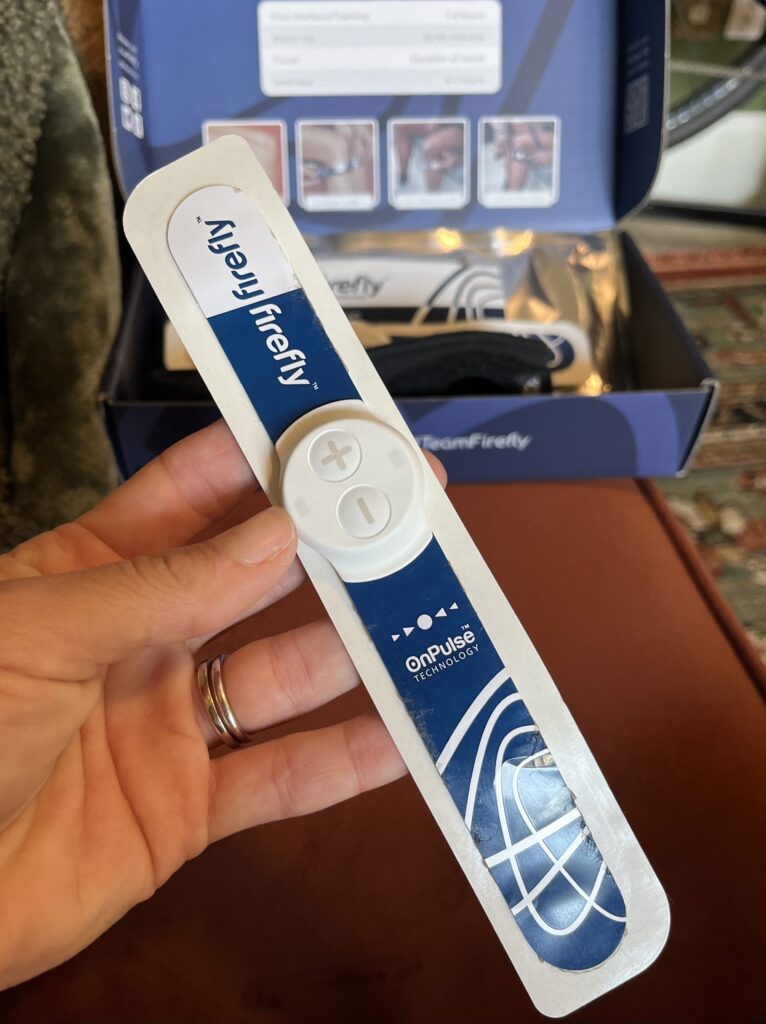
How Firefly is different than a TENS unit
Unlike a TENS unit, Firefly stimulates a nerve, not a muscle. Firefly is a modified NMES unit that stimulates the peroneal nerve directly, which causes the muscle to contract and increases blood flow. In contrast, stimulating a muscle with traditional NMES for an extended period of time can actually cause muscle fatigue.
Another difference is that Firefly also stimulates a lymphatic response and increases microcirculation by 399%.
FUN FACT: Olympian and pro triathlete, Ben Kanute, is on the Firefly Performance Advisory Board. Also, 750 professional and collegiate teams use Firefly.
Does Firefly really work?
The technology used in Firefly was originally developed as a recovery tool for orthopedic patients to promote blood flow post-surgery. It was later adapted as an active recovery device for athletic use.
Firefly has some pretty impressive studies showing:
- How the device is superior to compression boots in increasing microcirculation
- Can be effective in the rehabilitation process for lower limb injury
- Promotes a significant increase in performance 24 hours after strenuous exercise
Studies have also show that Firefly can have significant implications in preventing DVT during travel.
Clinical Studies:
- Firefly is superior to intermittent compression boots in increasing blood microcirculation
- Use of neuromuscular electrostimulation during athletic rehabilitation
- Firefly aids in recovery leading to significant increase in performance 24 hours post strenuous exercise
- Significant implications for preventing DVT during travel
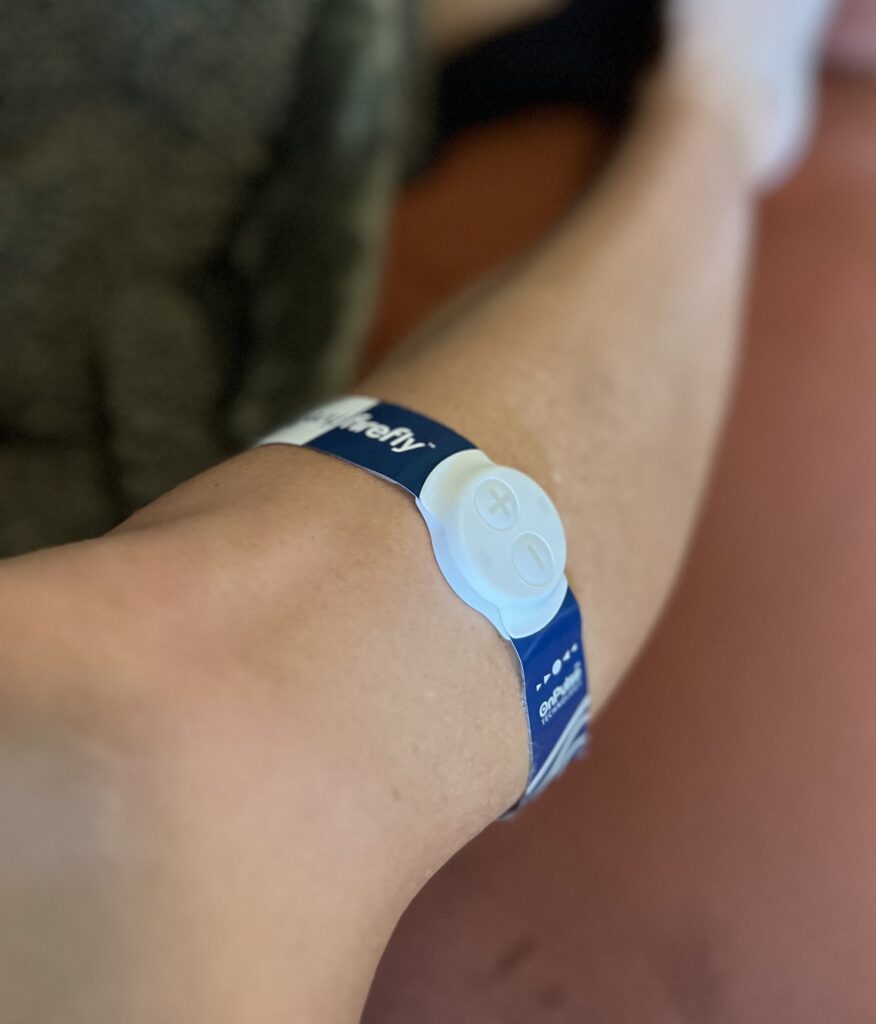
Pros and cons
Firefly definitely helps relieve muscle soreness, especially after I do a hard bike or run. Also, I’ve seen a big difference when using Firefly post-race. It helps to prevent my legs from feeling so sore the next day. I like that it’s small, portable and easy to take with me when I travel.
It takes a bit of practice to place the device in the right spot to get the desired “foot flutter.” Sometimes, I have to turn the device off and reposition it so it sits on the nerve properly. It just takes some trial and error.
The only con I see with Firefly is that it’s a single use device, so it’s not rechargeable. It has a 30-hour battery life, which lasts me about 1-2 months of regular use.
I spoke with a company representative who said they’re exploring options to make the device rechargeable in the future. However, the price of a single pair is only $48, so it’s a minimal investment.
Firefly is available for purchase on RecoveryFirefly.com as well as The Feed.
